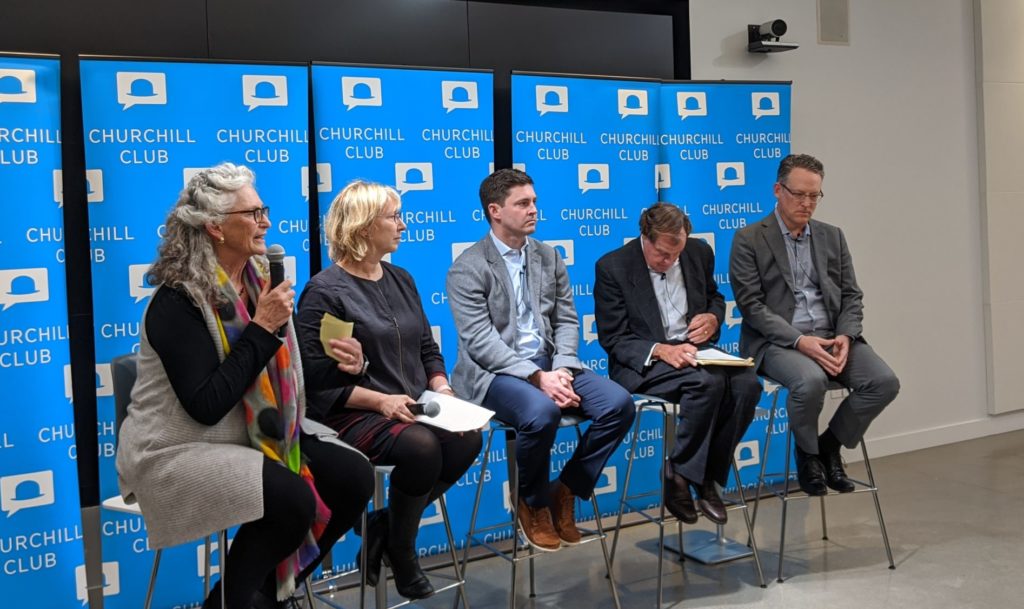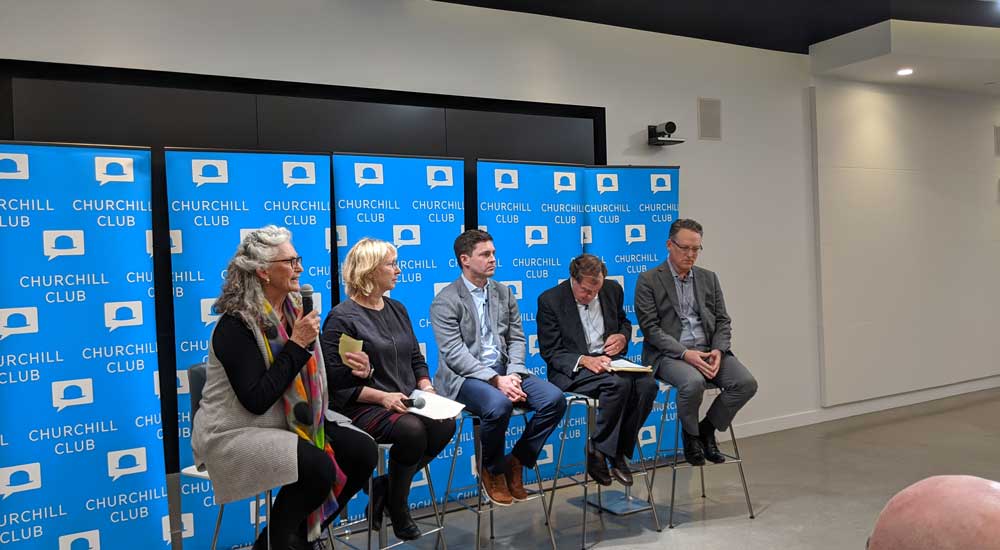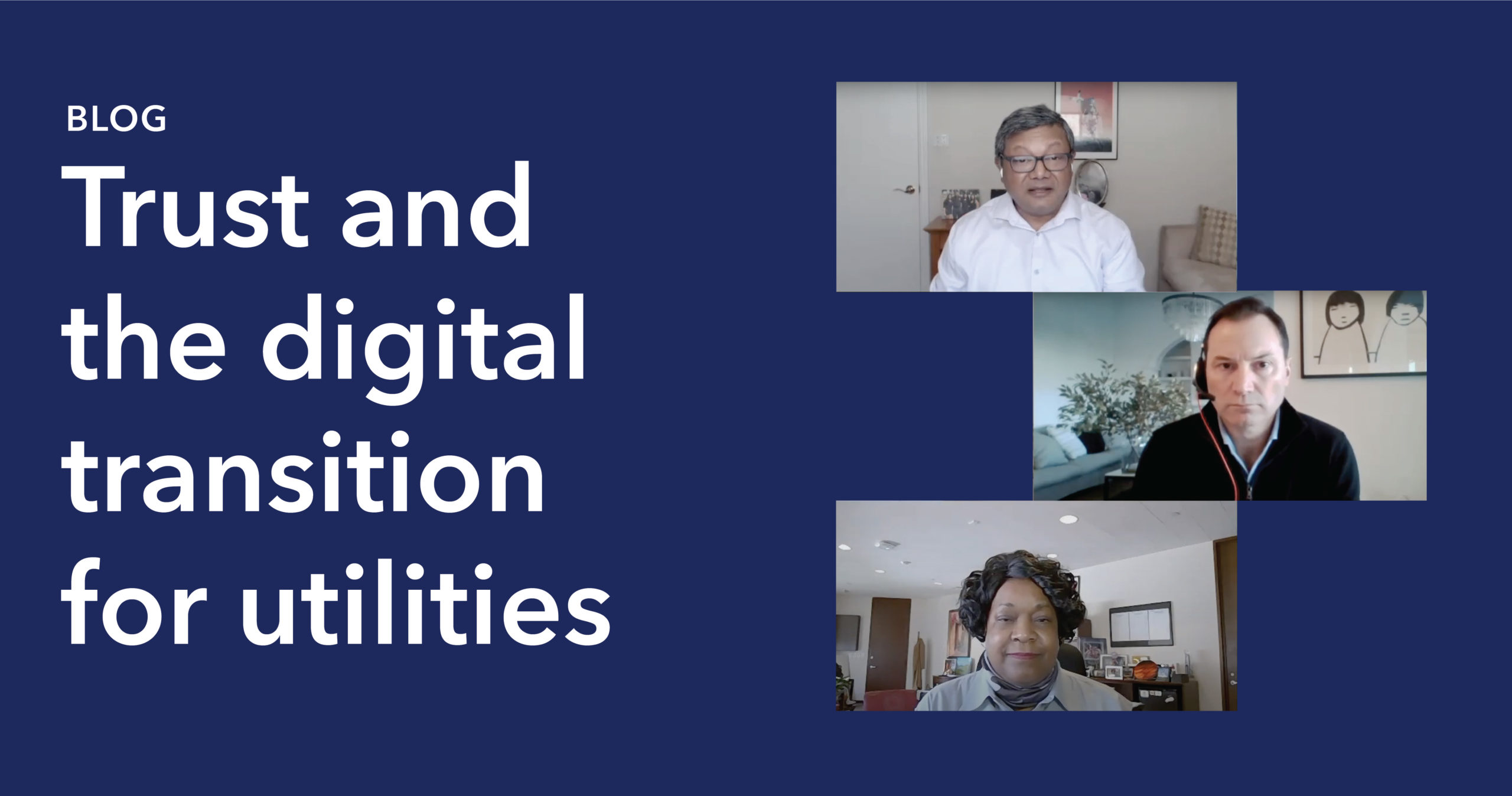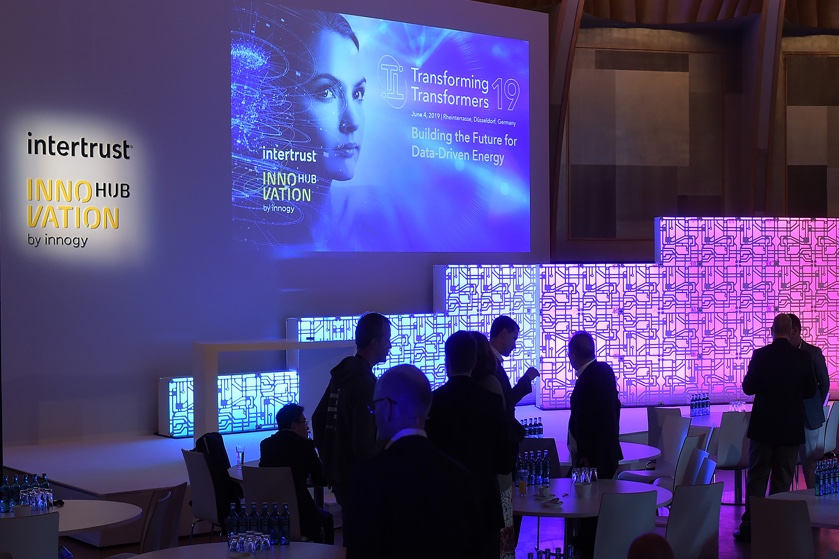By passing SB-100, California committed itself to attaining 100% carbon-free electricity by the year 2045. While that is an admirable goal, what is needed to actually get there? How realistic is this goal? These are some of the questions that experts in the energy field discussed at a panel discussion entitled “California’s SB-100: The Race to 100% Clean Energy “ sponsored by the Silicon Valley organization Churchill Club.
Not surprisingly, much of the discussion was of the “good news / bad news” type. On the good news side, Arne Olson, senior partner at the energy consulting firm E3, said that California could get to 70% to 90% reductions in carbon emissions at low cost. As for the bad news, Olson believes that California’s 100% goal is “aspirational” and not possible to achieve with today’s technology. One of the issues is that by their very nature, the current trifecta of renewables (solar, wind, and batteries) being introduced into the California market provide highly variable power. Also, current battery technology is not yet applicable for the long-term energy storage needed to power the state when renewable energy supplies aren’t sufficient. Olson also noted that while California can make advances in decarbonizing its energy grid, decarbonizing other sectors will continue to be an issue. For example, consumers’ continued preference for gas-guzzling SUVs makes the decarbonization of the transportation sector a challenge.
Sally Benson, professor of Energy Resources Engineering and co-director of the Precourt Institute for Energy at Stanford, emphasized that to reach a truly 100% carbon-free grid, there is a need for low-carbon dispatchable energy resources, i.e., energy under the control of the utility that can be injected into the grid as needed. She cited two examples: biomass power plants and natural gas power plants equipped with carbon capture technologies. Benson argued that by including these sorts of resources and not relying entirely on renewables, California can avoid an overbuild of renewables—thereby saving money and freeing up land for other uses that would otherwise have to be dedicated to solar or wind generation.
Finance, markets, and DERs
Of course, generation isn’t the only issue standing between California and a carbon-free electrical grid. Two other aspects where data will play a central role were also discussed, namely grid modernization and energy markets. Thomas Heller, non-executive board chair and senior strategic advisor, Climate Policy Initiative and director of Stanford University’s Sustainability Finance Initiative at the Precourt Energy Institute, said that the changes being discussed to reach a carbon-free grid also required new grid infrastructure. He posed the question of how to take the grid from its current centralized system to one that can handle the two-way flows needed to handle solar, batteries, and other distributed energy resources (DERs) and stated that finance is central to making this transition. In a grid largely powered by renewables with near zero generation costs, flexible services become more valuable. Finance and supporting regulations have to change from current ones which are modeled around the costs of generating electricity from fossil fuel based resources. Heller said that much of the assets needed for two-way integration of DERs will be software and other digitized control systems, but these are intangible and hard to finance under current structures.
Ryan Hanley, general manager of Shell’s Shell Energy Platform business, argued that California was actually behind in another necessary ingredient, namely energy markets. Hanley led the work on a grid scale battery project in Australia that brought down the costs of ancillary services by 70%, so he speaks from firsthand experience of working in deregulated markets. He specifically said that California was far behind in competitive wholesale electricity markets, especially compared to Australia and Europe. In Europe, utilities’ roles are just to manage “the pipes and wires” (Hanley). California, with limited retail competition and a general policy of only utilities supplying energy to the grid, seems dated in comparison.
How to bring inclusion to the digital grid?
An important question that was brought up was social inclusion, i.e., how can the transition to a clean energy grid be done in such a way that would not further the wealth divide already existing in California. Olson said that traditionally, the utility can be thought of as an insurance pool where everyone contributes to keep electricity prices equitable. With all of the problems surrounding PG&E—the largest utility in California, which also happens to be bankrupt—there is political pressure to break up the utility. Olson is concerned that this could lead to the well-off areas such as San Jose and San Francisco breaking off and no longer subsidizing less well-off locations such as the Central Valley.
According to Heller, the digital transformation of the grid will, in itself, create a situation where current inequality won’t be solved by “usual means.” If Heller is correct, this is an unacceptable situation and one that everyone involved in the energy and data space will need to work together to solve.

From left to right: Jane Long, Kravis Senior Contributing Scientist, Environmental Defense Fund (moderator); Sally Benson, Co-Director, Precourt Institute for Energy and Professor of Energy Resources Engineering, Stanford University; Ryan Hanley, GM Shell Energy Platform, Shell; Thomas Heller, Non-Executive Board Chair and Senior Strategic Advisor, Climate Policy Initiative, Arne Olson, Senior Partner, E3



